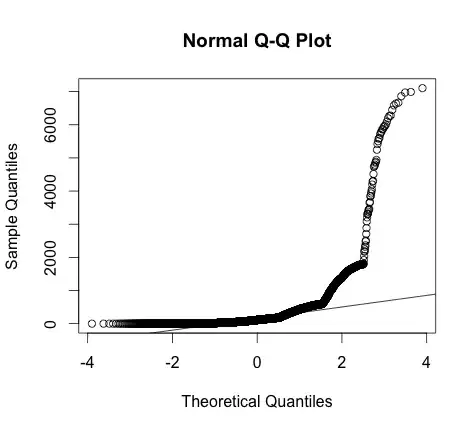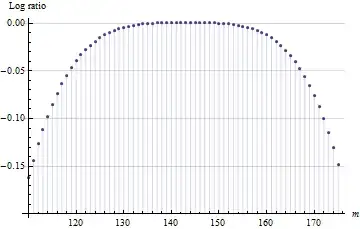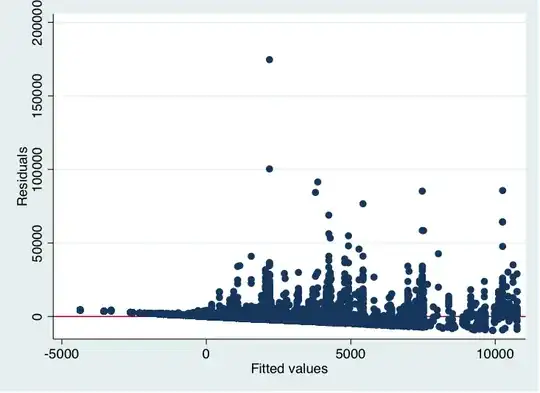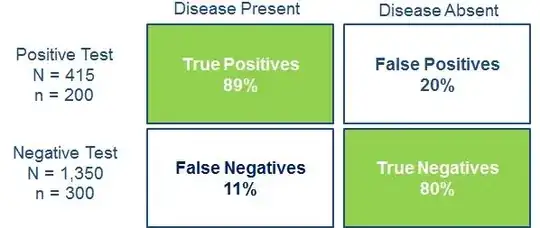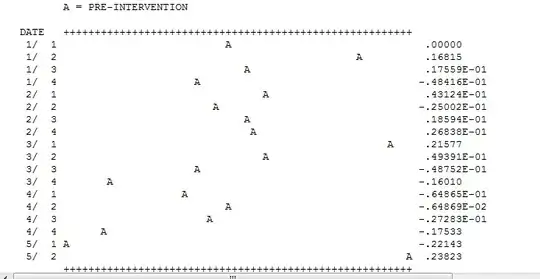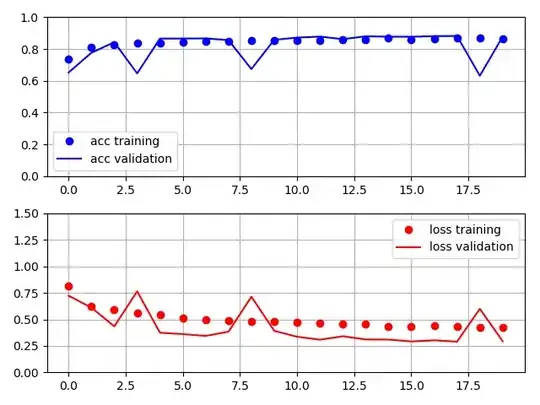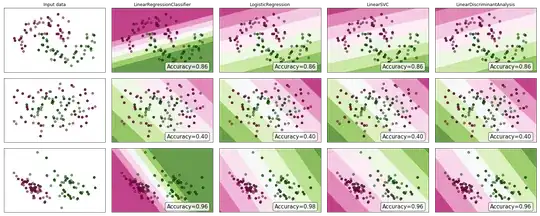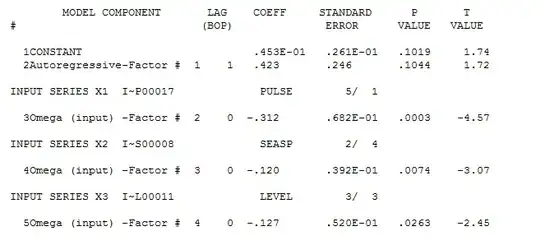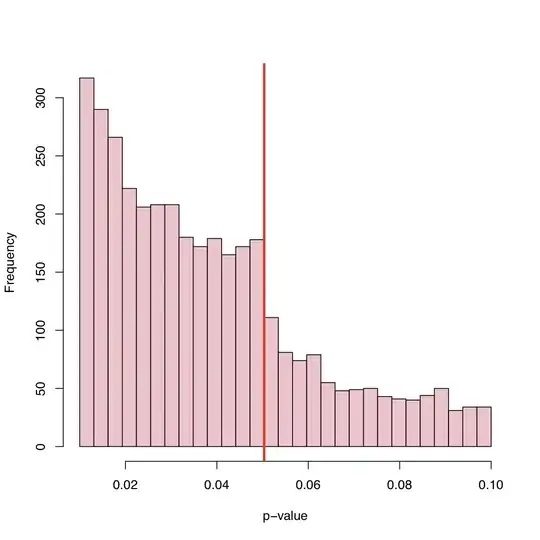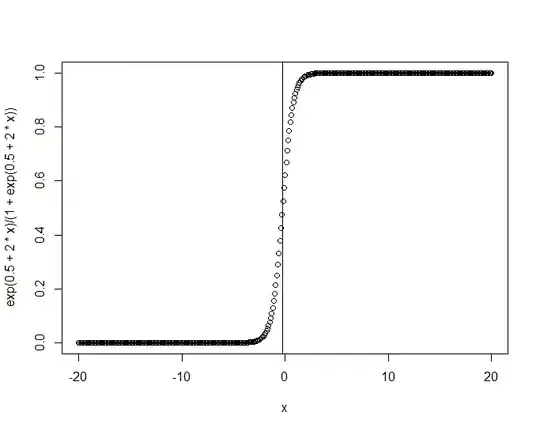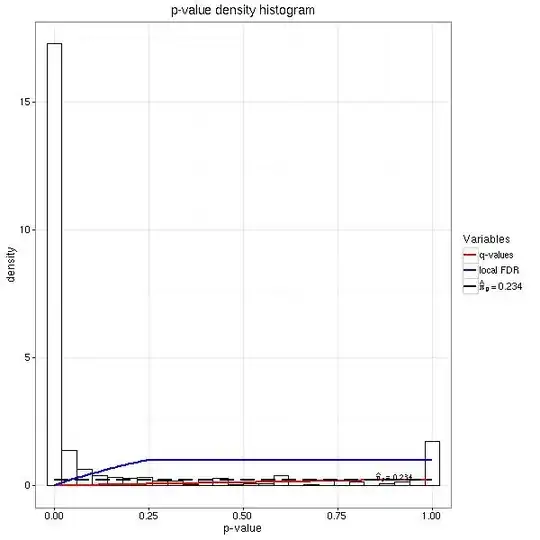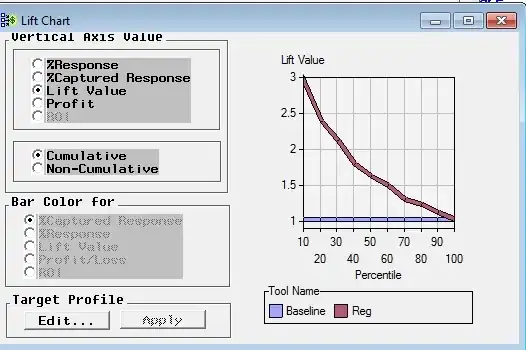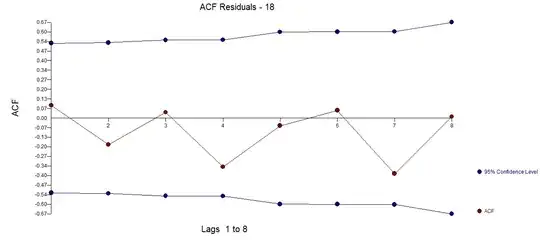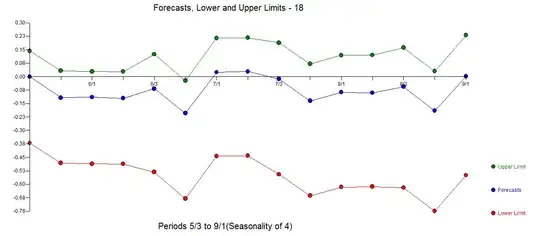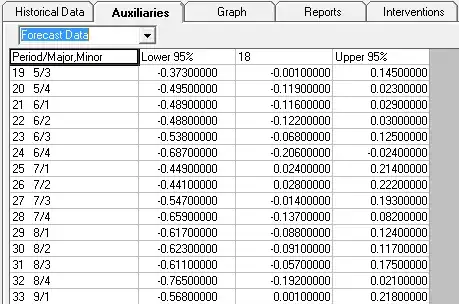I have the following data stored in pandas Series:
errro
2019-08-06 -0.010112
2019-08-07 0.149606
2019-08-08 0.072981
2019-08-09 -0.028481
2019-08-13 0.016070
2019-08-14 -0.031424
2019-08-15 -0.009823
2019-08-16 0.008425
2019-08-20 0.205810
2019-08-21 0.130842
2019-08-22 -0.002020
2019-08-23 -0.174903
2019-08-27 -0.159731
2019-08-28 -0.094326
2019-08-29 -0.084832
2019-08-30 -0.228481
2019-09-03 -0.341104
2019-09-04 0.066397
I am using the following code:
import pmdarima as pm
rs_fit = pm.auto_arima(error.values, start_p=1, start_q=1, max_p=3, max_q=3, m=12,
start_P=0, seasonal=False, trace=True,
n_jobs=-1, # We can run this in parallel by controlling this option
error_action='ignore', # don't want to know if an order does not work
suppress_warnings=True, # don't want convergence warnings
random=True, random_state=42,
n_fits=25)
rs_fit.predict(n_periods=15)
I get the following output: rs_fit.predict(n_periods=15)
Out[10]:
array([ 0.11260974, -0.02270731, -0.02270731, -0.02270731, -0.02270731,
-0.02270731, -0.02270731, -0.02270731, -0.02270731, -0.02270731,
-0.02270731, -0.02270731, -0.02270731, -0.02270731, -0.02270731])
I am not sure I understand the repetitions of errors after step 1.
Edit: When I change the above to:
modl = auto_arima(error.values, start_p=1, start_q=1, start_P=1, start_Q=1,
max_p=5, max_q=5, max_P=5, max_Q=5, seasonal=False,
stepwise=True, suppress_warnings=True, D=10, max_D=10,
error_action='ignore')
The results are drastically different:
Out[26]:
array([-0.17272289, -0.18657458, -0.20042626, -0.21427794, -0.22812963,
-0.24198131, -0.255833 , -0.26968468, -0.28353636, -0.29738805,
-0.31123973, -0.32509141, -0.3389431 , -0.35279478, -0.36664646])
Edit2:
What size of error series should I for 15 periods ahead forecast? Is there any guideline to it? And how else can I improve the model fit above ?
